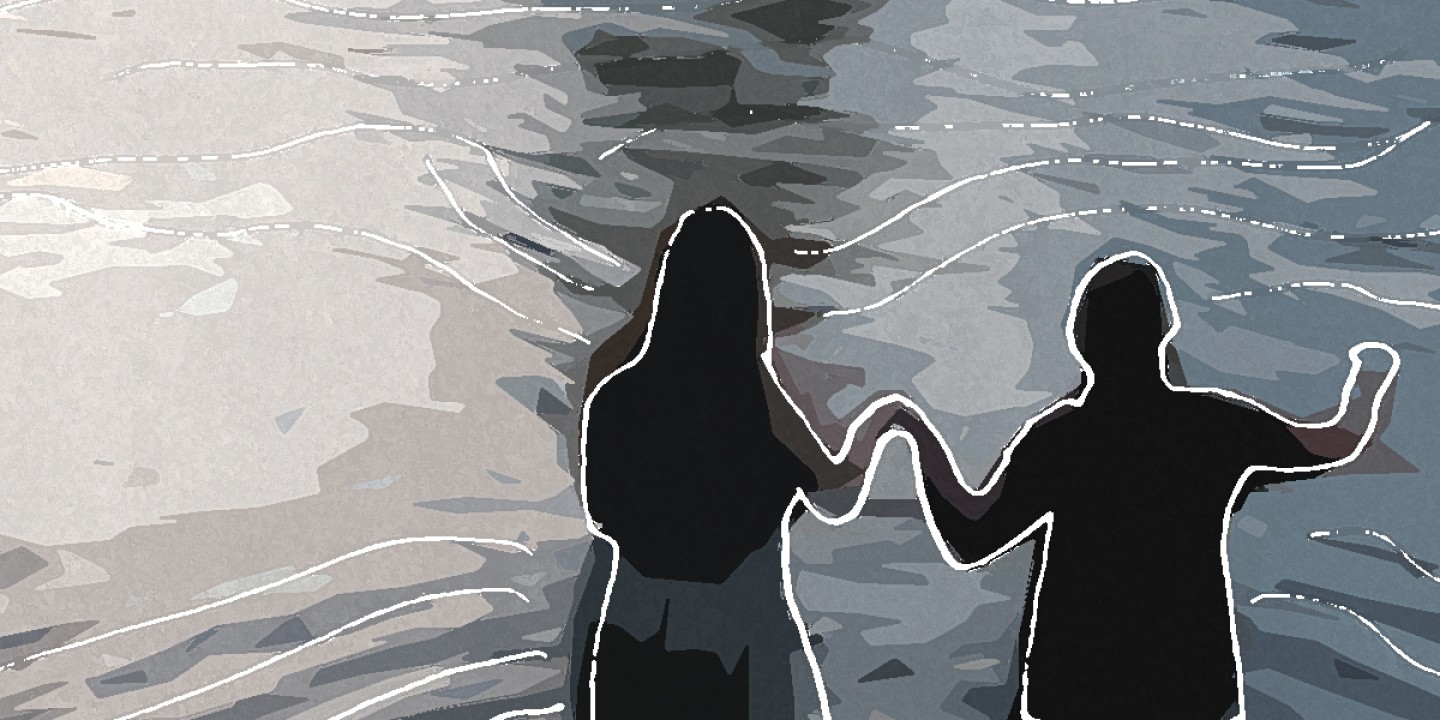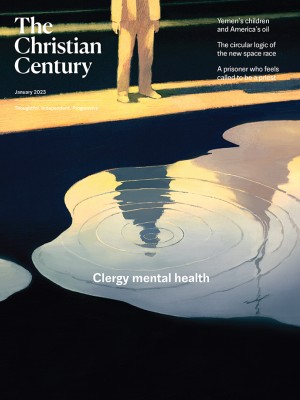Our living waters are struggling to breathe
River baptisms are becoming a casualty of polluted waters.

I step cautiously off the vein of roots as I feel the sensation of sinking an inch into the silt of the Eno River. I pull my foot free and the mud stirs, the clear water mushrooming with billows of dirt and sand. I’m scrutinizing this spot for baptisms, testing the ease of entry and the depth of water.
This particular medium for baptisms—a river—is recommended to the church in the Didache. This early Christian treatise offers a blunt and detailed description of how to do church things properly—and the community that produced the text seems to have been quite scrupulous. They preferred cold baptism water to warm and called for fasting, if possible, before the ritual. They also desired water moving by way of a stream or river. Flowing water reminds those being baptized of Jesus’ pronouncement to a Samaritan woman at a well that he had “living water” in his possession.
Read our latest issue or browse back issues.
The Didache writers provide scant reasoning for their choices. But the Bible is brimming with reasons to put our bodies in the river for baptism. “You make springs gush forth in the valleys,” writes the psalmist. “They flow between the hills,
giving drink to every wild animal;
the wild asses quench their thirst.
By the streams the birds of the air have their habitation;
they sing among the branches.
From your lofty abode you water the mountains;
the earth is satisfied with the fruit of your work. (Ps. 104:10–13)
Like baptism, rivers are a paradox. They are dangerous; they are also the center of life, where creatures drink with lapping tongues and cupped palms. Jesus is baptized in a river, a place where fish lay their eggs for fertilization, where tadpoles morph into frogs, where people wash bodies and clothing. Creatures die in these waters, their bodies decomposing into silt. This water contains insect and animal excrement. It is for drinking and playing. It is a life that gives life, and it contains unseen hazards below the surface.
I think of how one person from our church being baptized, Elizabeth, will wear her white dress for baptism—for dramatic effect, she says, but it will also bind her to generations before who entered the river and emerged to put on white gowns. Resurrection happens in these waters, Ambrose notes, as the angels welcome the people of God into their fellowship, all of them wearing unblemished party clothes, fit for eternity.
But standing in the thick of our living Eno, I realize that Elizabeth will emerge from this water cleansed from sin and covered in mud. Gregory of Nazianzus writes that baptism is a first birth that anticipates our second—the resurrection. There is resurrection in the water but also new life that comes with a tear of flesh and a surge of blood.
Baptism anticipates both life and death as it blurs the fragile line between beginning and end. The river invites us into the messy, pungent mud of the Christian life, where living and dying embrace. “Do you not know you were baptized into Christ’s death?” Paul asks the church in Rome. I sense this as I push Elizabeth beneath the brown current, where she disappears for a moment into a grave of coffee-colored water. An eddy of sediment rises with her as she takes in a heavy breath, a look of shock on her face. The water is cold here in the tomb of the river. Death before birth, another unexpected reversal.
I suspect we are running out of time for river baptisms. Each year the county officials award a letter grade to the ecosystems of our rivers and streams, a report card ritual that fails to convey the danger we face if our watersheds fail. Our rivers strain under fecal bacteria from sanitary sewer spills, leaking septic systems, and neglected dog waste. Algal blooms from yard waste choke out native life. Erosion increases turbidity, and our streams clog with brown sediment. Our living water struggles to breathe.
Metallic water, sick children, and cancerous streams remind us that rivers are not natural resources that can be endlessly polluted, marred, diverted, and damned. Rivers are creatures, living among and keeping alive other creatures, binding us in mutual flourishing and common destruction.
All flowing water is living water. Rivers are characters in the salvation story, created beings that act and have a will of their own. Like us they praise and rebel. In the Hebrew Bible, the Jordan River announces that freedom is near. The Eastern Orthodox Church offers a blessing in the season of Epiphany to consecrate rivers for their responsibility in our baptism, the source and fount of both natural and eternal life: “Today the nature of the waters is sanctified, / The Jordan bursts forth and turns back the flood of its streams, / Seeing the Master wash Himself.” All of earth’s water participates in the Jordan’s holiness, its springing back in joy. “Give it the blessing of the Jordan,” the priest prays.
As we wind our way down to the crest of the Eno River for baptism, our church sings, “O sisters, let’s go down, down to the river to pray.” We are made of river stuff, bodies that shed, sleep, hunger, and excrete. Baptism takes us into the heart of creatureliness—“to recover the humanity God first intended,” says Rowan Williams. In baptism, Jesus teaches us how to be creatures. “Water has held us,” we sing in my Mennonite church. And so we are—creatures held in birth and rebirth, in death and in rising again.






